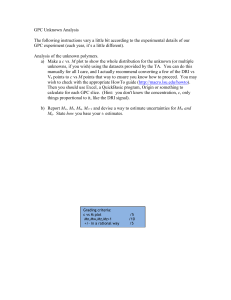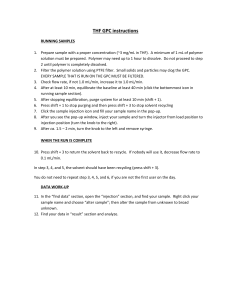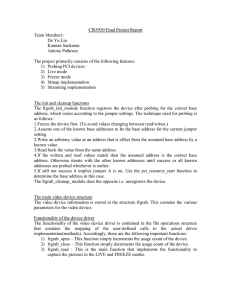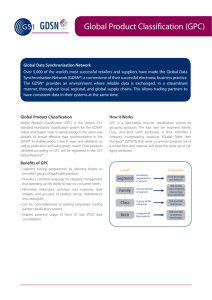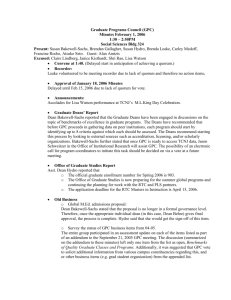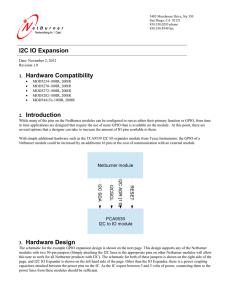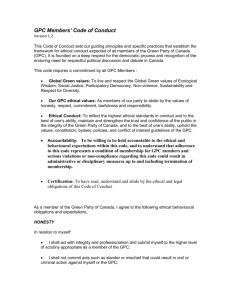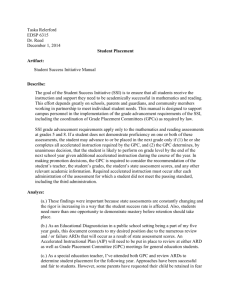Homework 9
advertisement
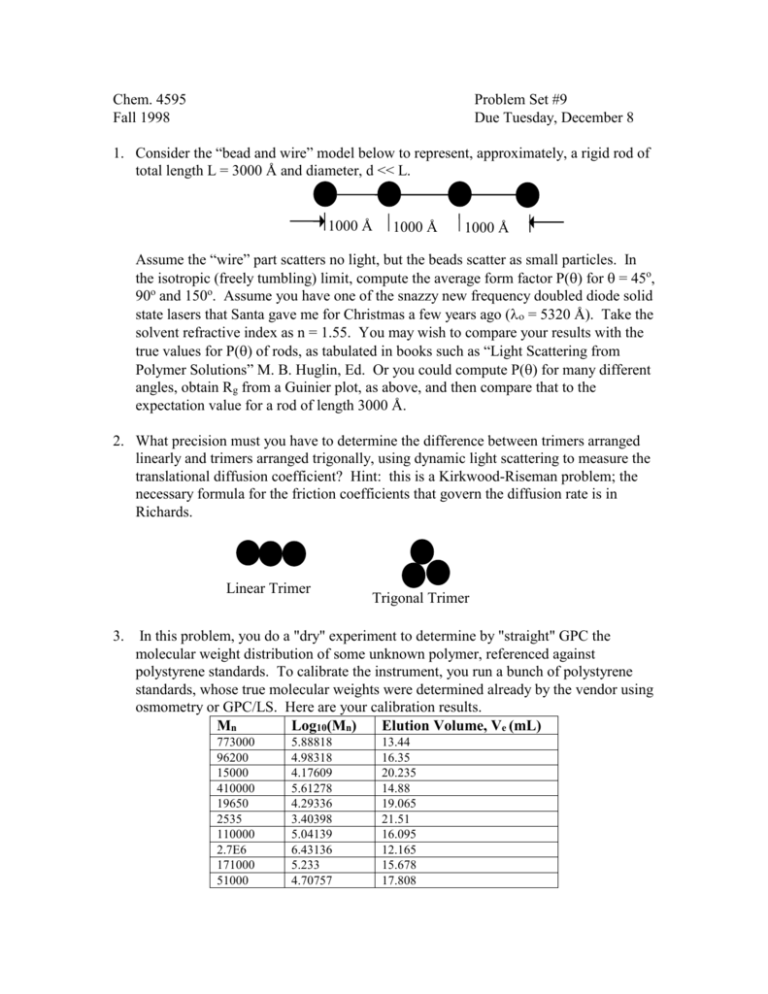
Chem. 4595 Fall 1998 Problem Set #9 Due Tuesday, December 8 1. Consider the “bead and wire” model below to represent, approximately, a rigid rod of total length L = 3000 Å and diameter, d << L. 1000 Å 1000 Å 1000 Å Assume the “wire” part scatters no light, but the beads scatter as small particles. In the isotropic (freely tumbling) limit, compute the average form factor P() for = 45o, 90o and 150o. Assume you have one of the snazzy new frequency doubled diode solid state lasers that Santa gave me for Christmas a few years ago (= 5320 Å). Take the solvent refractive index as n = 1.55. You may wish to compare your results with the true values for P() of rods, as tabulated in books such as “Light Scattering from Polymer Solutions” M. B. Huglin, Ed. Or you could compute P(for many different angles, obtain Rg from a Guinier plot, as above, and then compare that to the expectation value for a rod of length 3000 Å. 2. What precision must you have to determine the difference between trimers arranged linearly and trimers arranged trigonally, using dynamic light scattering to measure the translational diffusion coefficient? Hint: this is a Kirkwood-Riseman problem; the necessary formula for the friction coefficients that govern the diffusion rate is in Richards. Linear Trimer Trigonal Trimer 3. In this problem, you do a "dry" experiment to determine by "straight" GPC the molecular weight distribution of some unknown polymer, referenced against polystyrene standards. To calibrate the instrument, you run a bunch of polystyrene standards, whose true molecular weights were determined already by the vendor using osmometry or GPC/LS. Here are your calibration results. Mn Log10(Mn) Elution Volume, Ve (mL) 773000 96200 15000 410000 19650 2535 110000 2.7E6 171000 51000 5.88818 4.98318 4.17609 5.61278 4.29336 3.40398 5.04139 6.43136 5.233 4.70757 13.44 16.35 20.235 14.88 19.065 21.51 16.095 12.165 15.678 17.808 Now you inject your unknown polymer and record its trace, as shown below: str8GPC 0.05 DRI signal 0.04 0.03 0.02 0.01 0.00 10 15 20 V e "DRI signal" is a voltage level from the differential refractive index detector. It is proportional to the concentration (the actual constant of proportionality isn't very important in straight GPC). Your mission is to convert this plot into a DRI signal vs. M plot, then determine Mn, Mw, and Mz, using the calibration data provided. You can solve this problem graphically, with just a calculator and a ruler, or you can devise a computerized approach (less tedious once you figure out how to do it). If you choose to follow the computerized approach, you must get the data from the website. It consists of a huge set of X,Y data pairs, the elution volume vs. voltage from the DRI concentration detector. You can find these data at: http://russo.chem.lsu.edu/4595web/worddocs/gpc.htm. There must be several ways to get these data into a program where you can manipulate them. After viewing the file at the address just listed, I recommend erasing the "gpc.htm", then hit "return". You should see a list of files in the "worddocs" directory on my server. Right click on the GPC.htm file to save it on your desktop. Start Excel and then open the gpc.htm file from within Excel. Hints: You can use Origin or Excel to make a nice fit to the log10M vs. Ve data. This allows you to quickly convert Ve data, point by point, to M. That will give you the plot as DRI vs. M. Now you must subtract any baseline data underneath the curve. The concentration at a given point is proportional to the difference between that point and the baseline. Use standard relations to compute Mn, Mw, Mz. You may wish to download the GPC "HowTo" file from the http://russo.chem.lsu.edu website. If you use Origin, and if the dataset has an appreciable baseline, try out its spiffy baseline subtraction features Also note Origin's nifty row and column statistics features. Don't hesitate to ask for help! It's too late in the semester to struggle, but this is a good problem with which to develop your computer skills. 4. Compute the hydrodynamic radius of a polymer that, at infinite dilution, diffuses at 1.35 x 10-7 cm2/s in a fluid of viscosity 1.08 cP at 35oC.
